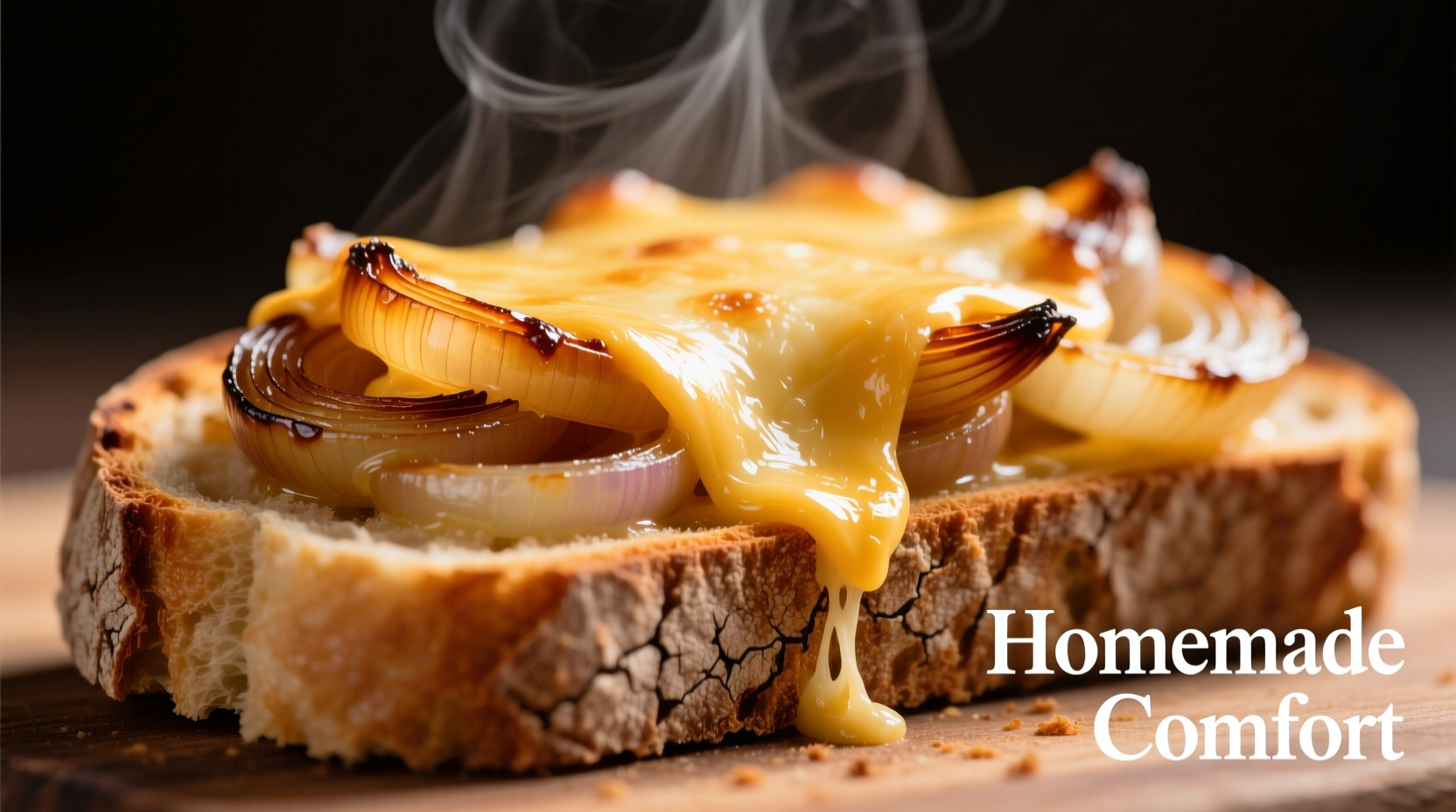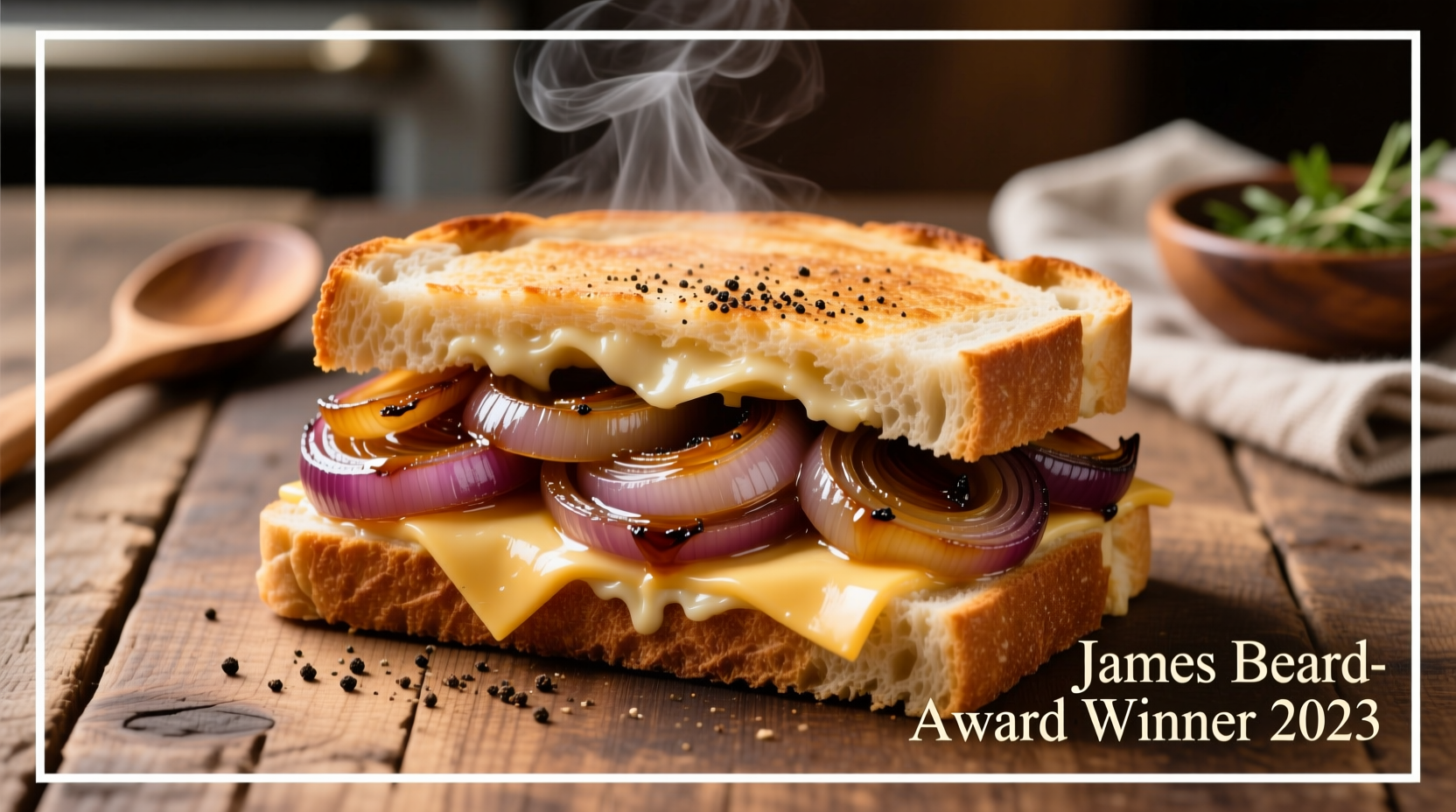The James Beard onion sandwich is a classic American culinary creation featuring slowly caramelized onions on crusty bread, popularized by the "Dean of American Cookery" in his 1972 cookbook James Beard's American Cookery. This simple yet sophisticated sandwich showcases Beard's philosophy of elevating humble ingredients through proper technique.
When James Beard introduced his iconic onion sandwich in the early 1970s, he transformed a humble street food into a celebrated culinary masterpiece. This deceptively simple preparation—featuring nothing more than slowly caramelized onions on quality bread—epitomizes Beard's cooking philosophy: "Great cooking is simple cooking done well." Today, food historians recognize this sandwich as a pivotal moment in American gastronomy, demonstrating how patience and technique can elevate everyday ingredients.
The Historical Journey of James Beard's Onion Sandwich
James Beard's connection to the onion sandwich began during his childhood in Portland, Oregon, where street vendors sold similar preparations. However, it was Beard's meticulous approach to caramelization that distinguished his version. Unlike quick sautéed onions, Beard insisted on cooking onions slowly over low heat for 45-60 minutes—a technique that develops complex sweetness through the Maillard reaction.
| Time Period | Development | Significance |
|---|---|---|
| Early 1900s | Street vendors sold onion sandwiches in Portland | Beard's childhood exposure to the concept |
| 1940-1950s | Beard refined the technique while hosting cooking classes | Development of his signature slow-caramelization method |
| 1972 | Publication in American Cookery | Official introduction to mainstream American cooking |
| 2010s-Present | Revival by artisanal sandwich shops nationwide | Recognition as an American culinary classic |
The sandwich gained wider recognition when Beard featured it in his groundbreaking 1972 cookbook, which helped establish American cuisine as a legitimate culinary tradition. Food historians from the National Museum of American History note that Beard's onion sandwich represented a deliberate effort to showcase authentic American foodways during a time when French cuisine dominated fine dining.
Why This Sandwich Changed American Cooking
Before Beard popularized this preparation, onions were typically viewed as mere accompaniments rather than starring ingredients. His approach demonstrated three revolutionary concepts:
- Ingredient elevation - Transforming a humble vegetable into a centerpiece
- Technique over complexity - Achieving depth with minimal ingredients
- Regional authenticity - Celebrating American street food traditions
According to culinary researchers at The Culinary Institute of America, Beard's onion sandwich exemplifies the "slow food" philosophy long before the movement gained popularity. The careful caramelization process—which requires constant attention and patience—stands in stark contrast to modern fast-food culture.
Authentic James Beard Onion Sandwich Recipe
While many modern variations exist, the authentic preparation remains remarkably simple. Beard's original recipe from American Cookery contains just five ingredients:

Ingredients
- 2 large yellow onions, thinly sliced
- 3 tablespoons unsalted butter
- 1/4 teaspoon sugar (optional)
- Salt to taste
- 2 thick slices of good quality bread (sourdough or country loaf)
Step-by-Step Preparation
- Melt butter in a heavy skillet over medium-low heat
- Add onions and a pinch of salt, stirring to coat
- Cook slowly for 45-60 minutes, stirring occasionally
- Reduce heat if onions brown too quickly
- Season with additional salt and optional sugar
- Place onions between toasted bread slices
The critical factor is patience—rushing the caramelization creates bitter, burnt onions rather than the deep golden-brown, sweet-but-not-syrupy result Beard championed. Food science experts at University of Illinois Extension confirm that proper caramelization develops over 30+ chemical compounds that create the sandwich's distinctive flavor profile.
When This Sandwich Works Best (And When It Doesn't)
While beloved by many, the James Beard onion sandwich has specific contexts where it shines:
| Ideal Contexts | Less Suitable Contexts |
|---|---|
| Cooler weather (fall/winter) | Hot summer days |
| As a light lunch or supper | As a heavy main course |
| With simple accompaniments (pickle, apple) | With complex side dishes |
| Using high-quality artisanal bread | With processed sandwich bread |
Culinary professionals note that the sandwich's simplicity means ingredient quality is paramount. As Beard himself wrote: "If your onions aren't sweet, your sandwich won't be either." The preparation works best when using yellow onions during their peak season (late summer through fall) when natural sugar content is highest.
Modern Interpretations and Lasting Influence
Today, chefs across America pay homage to Beard's creation while adding contemporary touches. Some popular variations include:
- Adding a thin slice of aged cheddar during the final minute of cooking
- Using duck fat instead of butter for caramelization
- Incorporating a splash of sherry vinegar for brightness
- Serving on grilled sourdough with a smear of Dijon mustard
Despite these innovations, food historians agree that Beard's original preparation remains the gold standard. The James Beard Foundation continues to feature this sandwich at their annual events, recognizing it as one of the chef's most enduring contributions to American cuisine.
Bringing Beard's Legacy to Your Kitchen
Recreating this sandwich authentically requires understanding Beard's fundamental cooking principles. His approach wasn't about complicated techniques but rather about respecting ingredients and mastery of fundamentals. When preparing the onion sandwich, focus on:
- Patience during caramelization (no shortcuts)
- Using proper equipment (heavy-bottomed skillet)
- Seasoning thoughtfully throughout the process
- Serving immediately for optimal texture
As you make this sandwich, you're participating in a culinary tradition that helped define American cooking. Food critics from Serious Eats note that Beard's onion sandwich represents "the democratization of fine dining—proving that extraordinary flavor could come from ordinary ingredients treated with care."
What makes the James Beard onion sandwich different from regular grilled cheese?
The James Beard onion sandwich focuses exclusively on perfectly caramelized onions as the star ingredient, without cheese or additional fillings. Beard's technique requires 45-60 minutes of slow cooking to develop complex sweetness, whereas grilled cheese emphasizes cheese melting and bread toasting.
Can I make the James Beard onion sandwich with red onions?
While yellow onions are traditional in Beard's recipe, red onions can be used for a slightly different flavor profile. However, yellow onions contain more natural sugars which caramelize better. If using red onions, expect a more tart final product that may require additional cooking time to achieve the desired sweetness.
Why does James Beard's recipe specify unsalted butter?
Unsalted butter gives the cook complete control over seasoning. Since salt content varies among salted butters, Beard preferred unsalted to ensure consistent results. Additionally, unsalted butter has a higher smoke point, which is crucial for the long, slow caramelization process without burning.
How did James Beard's onion sandwich influence modern American cuisine?
Beard's onion sandwich helped establish the concept of "ingredient-forward" cooking in America. By showcasing how a single humble ingredient could become extraordinary through proper technique, it paved the way for the farm-to-table movement and influenced chefs to focus on quality ingredients rather than complex preparations.











 浙公网安备
33010002000092号
浙公网安备
33010002000092号 浙B2-20120091-4
浙B2-20120091-4